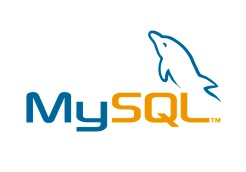Spring Boot 入门详解教程之基础篇(四)
一、前言
当系统的访问量增大时,相应的数据库的性能就逐渐下降。但是,大多数请求都是在重复的获取相同的数据,如果使用缓存,将结果数据放入其中可以很大程度上减轻数据库的负担,提升系统的响应速度。
本篇将介绍 Spring Boot 中缓存和 NoSQL 的使用。上篇文章《Spring Boot 入门之持久层篇(三)》。
二、整合缓存
Spring Boot 针对不同的缓存技术实现了不同的封装,本篇主要介绍 EhCache 和 Redis 缓存。
Spring Boot 提供了以下几个注解实现声明式缓存:
| 注解 | 说明 |
|---|---|
| @EnableCaching | 开启缓存功能,放在配置类或启动类上 |
| @CacheConfig | 缓存配置,设置缓存名称 |
| @Cacheable | 执行方法前先查询缓存是否有数据。有则直接返回缓存数据;否则查询数据再将数据放入缓存 |
| @CachePut | 执行新增或更新方法后,将数据放入缓存中 |
| @CacheEvict | 清除缓存 |
| @Caching | 将多个缓存操作重新组合到一个方法中 |
2.1 EhCache 缓存
2.1.1 添加依赖
<dependency><groupId>org.springframework.boot</groupId><artifactId>spring-boot-starter-cache</artifactId></dependency><dependency><groupId>net.sf.ehcache</groupId><artifactId>ehcache</artifactId></dependency>
2.1.2 添加配置
1)在 src/main/resources 目录下创建 ehcache.xml 文件,内容如下:
<?xml version="1.0" encoding="UTF-8"?><ehcache xmlns:xsi="http://www.w3.org/2001/XMLSchema-instance"xsi:noNamespaceSchemaLocation="http://ehcache.org/ehcache.xsd"><!-- 磁盘缓存位置 --><diskStore path="java.io.tmpdir/ehcache"/><!-- 默认缓存 --><defaultCachemaxEntriesLocalHeap="10000"eternal="false"timeToIdleSeconds="120"timeToLiveSeconds="120"maxEntriesLocalDisk="10000000"diskExpiryThreadIntervalSeconds="120"memoryStoreEvictionPolicy="LRU"><persistence strategy="localTempSwap"/></defaultCache><!-- 自定义缓存 --><cache name="department"maxElementsInMemory="1000"eternal="false"timeToIdleSeconds="50"timeToLiveSeconds="50"overflowToDisk="false"memoryStoreEvictionPolicy="LRU"/></ehcache>
说明:
name:Cache 的唯一标识maxElementsInMemory:内存中允许存储的最大的元素个数maxElementsOnDisk:硬盘最大缓存个数,0代表无限个clearOnFlush:内存数量最大时是否清除eternal:缓存对象是否永久有效,如果是,超时设置将被忽略overflowToDisk:内存不足(超过 maxElementsInMemory)时,是否启用磁盘缓存timeToIdleSeconds:设置对象在失效前的允许闲置时间(单位:秒)。仅当eternal=false对象不是永久有效时使用,可选属性,默认值是0,也就是可闲置时间无穷大timeToLiveSeconds:缓存数据的生存时间(TTL),也就是一个元素从构建到消亡的最大时间间隔值,这只能在元素不是永久驻留时有效,如果该值是0就意味着元素可以停顿无穷长的时间diskPersistent:是否将缓存数据持久化到磁盘上,如果为 true,JVM 重启数据依然存在。默认值是falsediskSpoolBufferSizeMB:这个参数设置DiskStore(磁盘缓存)的缓存区大小。默认是30MB。每个Cache都应该有自己的一个缓冲区diskExpiryThreadIntervalSeconds:磁盘失效线程运行时间间隔,默认是120秒memoryStoreEvictionPolicy:当达到 maxElementsInMemory 限制时,Ehcache 将根据指定策略清除内存。默认为 LRU(最近最少使用),其他策略有 FIFO(先进先出),LFU(较少使用)
2)application.properties :
# 缓存类型(ehcache、redis)spring.cache.type=ehcache# ehcache 配置文件spring.cache.ehcache.config=classpath:ehcache.xml# 打印日志,查看 sqllogging.level.com.light.springboot=DEBUG
2.1.3 编码
在持久层篇的基础上,结合 Mybatis 测试:
Service 层:
@CacheConfig(cacheNames = "department")@Servicepublic class DepartmentService {@Autowiredprivate DepartmentMapper departmentMapper;@CachePut(key = "#department.id")public Department save(Department department) {System.out.println("保存 id=" + department.getId() + " 的数据");this.departmentMapper.insert(department);return department;}@CachePut(key = "#department.id")public Department update(Department department) {System.out.println("修改 id=" + department.getId() + " 的数据");this.departmentMapper.update(department);return department;}@Cacheable(key = "#id")public Department getDepartmentById(Integer id) {System.out.println("获取 id=" + id + " 的数据");Department department = this.departmentMapper.getById(id);return department;}@CacheEvict(key = "#id")public void delete(Integer id) {System.out.println("删除 id=" + id + " 的数据");this.departmentMapper.deleteById(id);}}
控制层:
@Controller@RequestMapping("department")@ResponseBodypublic class DepartmentController {@Autowiredprivate DepartmentService departmentService;@RequestMapping("save")public Map<String,Object> save(Department department) {this.departmentService.save(department);Map<String,Object> map = new HashMap<String,Object>();map.put("code", "200");map.put("msg", "保存成功");return map;}@RequestMapping("get/{id}")public Map<String,Object> get(@PathVariable("id") Integer id) {Department department = this.departmentService.getDepartmentById(id);Map<String,Object> map = new HashMap<String,Object>();map.put("code", "200");map.put("msg", "获取成功");map.put("data", department);return map;}@RequestMapping("update")public Map<String,Object> update(Department department) {this.departmentService.update(department);Map<String,Object> map = new HashMap<String,Object>();map.put("code", "200");map.put("msg", "修改成功");return map;}@RequestMapping("delete/{id}")public Map<String,Object> delete(@PathVariable("id") Integer id) {this.departmentService.delete(id);Map<String,Object> map = new HashMap<String,Object>();map.put("code", "200");map.put("msg", "删除成功");return map;}}
启动类:
添加 @EnableCaching 注解,开启缓存功能。
@EnableCaching@SpringBootApplicationpublic class SpringbootNosqlApplication {public static void main(String[] args) {SpringApplication.run(SpringbootNosqlApplication.class, args);}}
2.1.4 测试说明
1) 发起保存请求:
保存 id=2 的数据2017-12-06 14:50:48.800 DEBUG 680 --- [nio-8081-exec-7] c.l.s.dao.DepartmentMapper.insert : ==> Preparing: insert into department(id,name,descr) values(?,?,?)2017-12-06 14:50:48.801 DEBUG 680 --- [nio-8081-exec-7] c.l.s.dao.DepartmentMapper.insert : ==> Parameters: 2(Integer), Ehcache 部门(String), Ehcache(String)2017-12-06 14:50:48.868 DEBUG 680 --- [nio-8081-exec-7] c.l.s.dao.DepartmentMapper.insert : <== Updates: 1
2) 保存成功后,立刻发起查询请求,没有日志打印,但返回对象数据,说明数据是从缓存中获取。
3) 发起修改请求:
修改 id=2 的数据2017-12-06 14:51:16.588 DEBUG 680 --- [nio-8081-exec-8] c.l.s.dao.DepartmentMapper.update : ==> Preparing: update department set name = ? , descr = ? where id = ?2017-12-06 14:51:16.589 DEBUG 680 --- [nio-8081-exec-8] c.l.s.dao.DepartmentMapper.update : ==> Parameters: Ehcache 部门2(String), Ehcache2(String), 2(Integer)2017-12-06 14:51:16.657 DEBUG 680 --- [nio-8081-exec-8] c.l.s.dao.DepartmentMapper.update : <== Updates: 1
4) 修改成功后,立刻发起查询请求,没有日志打印,但返回修改后的对象数据,说明缓存中的数据已经同步。
5) 发起删除请求:
删除 id=2 的数据2017-12-06 14:52:07.572 DEBUG 680 --- [nio-8081-exec-1] c.l.s.dao.DepartmentMapper.deleteById : ==> Preparing: delete from department where id = ?2017-12-06 14:52:07.572 DEBUG 680 --- [nio-8081-exec-1] c.l.s.dao.DepartmentMapper.deleteById : ==> Parameters: 2(Integer)2017-12-06 14:52:07.613 DEBUG 680 --- [nio-8081-exec-1] c.l.s.dao.DepartmentMapper.deleteById : <== Updates: 1
6) 删除成功后,立刻发起查询请求,控制台打印 sql 语句,说明缓存数据被删除,需要查询数据库。
获取 id=2 的数据2017-12-06 14:52:40.324 DEBUG 680 --- [nio-8081-exec-3] c.l.s.dao.DepartmentMapper.getById : ==> Preparing: select id,name,descr from department where id = ?2017-12-06 14:52:40.325 DEBUG 680 --- [nio-8081-exec-3] c.l.s.dao.DepartmentMapper.getById : ==> Parameters: 2(Integer)2017-12-06 14:52:40.328 DEBUG 680 --- [nio-8081-exec-3] c.l.s.dao.DepartmentMapper.getById : <== Total: 0
2.2 Redis 缓存
2.2.1 添加依赖
<dependency><groupId>org.springframework.boot</groupId><artifactId>spring-boot-starter-data-redis</artifactId></dependency>
2.2.2 添加配置
application.properties :
# redis 配置spring.redis.host=192.168.2.11spring.redis.port=6379spring.redis.password=redis123# 缓存过期时间,单位毫秒spring.cache.redis.time-to-live=60000# 缓存类型(ehcache、redis)spring.cache.type=redis# 打印日志,查看 sqllogging.level.com.light.springboot=DEBUG
注意:spring.cache.type=redis,缓存类型设置成 redis。
完成上边 2 个步骤后,其他步骤与测试 Ehcache 时的步骤一致。
测试结果也一致,此处省略。
三、整合 Redis
上一个小节其实已经介绍了 Spring Boot 整合 Redis 的内容。
在添加 redis 依赖包启动项目后,Spring Boot 会自动配置 RedisCacheManger 和 RedisTemplate 的 Bean。如果开发者不想使用 Spring Boot 写好的 Redis 缓存,而是想使用其 API 自己实现缓存功能、消息队列或分布式锁之类的需求时,可以继续往下浏览。
Spring Data Redis 为我们提供 RedisTemplate 和 StringRedisTemplate 两个模板进行数据操作,它们主要 的访问方法如下:
| 方法 | 说明 |
|---|---|
| opsForValue() | 操作简单属性的数据 |
| opsForList() | 操作含有 list 的数据 |
| opsForSet() | 操作含有 set 的数据 |
| opsForZSet() | 操作含有 zset 的数据 |
| opsForHash() | 操作含有 hash 的数据 |
3.1 添加依赖
<dependency><groupId>org.springframework.boot</groupId><artifactId>spring-boot-starter-data-redis</artifactId></dependency>
3.2 配置连接
spring.redis.host=192.168.2.11spring.redis.port=6379spring.redis.password=redis123
3.3 编码
@Componentpublic class RedisDao {@Autowiredprivate StringRedisTemplate stringRedisTemplate;public void set(String key, String value) {this.stringRedisTemplate.opsForValue().set(key, value);}public String get(String key) {return this.stringRedisTemplate.opsForValue().get(key);}public void delete(String key) {this.stringRedisTemplate.delete(key);}}
3.4 测试
@RunWith(SpringRunner.class)@SpringBootTestpublic class RedisDaoTest {@Autowiredprivate RedisDao redisDao;@Testpublic void testSet() {String key = "name";String value = "zhangsan";this.redisDao.set(key, value);}@Testpublic void testGet() {String key = "name";String value = this.redisDao.get(key);System.out.println(value);}@Testpublic void testDelete() {String key = "name";this.redisDao.delete(key);}}
测试结果省略...
四、整合 MongoDB
Spring Data MongoDB 提供了 MongoTemplate 模板 和 Repository 让开发者进行数据访问。
4.1 添加依赖
<dependency><groupId>org.springframework.boot</groupId><artifactId>spring-boot-starter-data-mongodb</artifactId></dependency>
4.2 配置连接
spring.data.mongodb.host=192.168.2.31spring.data.mongodb.port=27017spring.data.mongodb.database=test
4.3 编码
4.3.1 使用 MongoTemplate
@Componentpublic class MongodbDao {@Autowiredprivate MongoTemplate mongoTemplate;public void insert(Department department) {this.mongoTemplate.insert(department);}public void deleteById(int id) {Criteria criteria = Criteria.where("id").is(id);Query query = new Query(criteria);this.mongoTemplate.remove(query, Department.class);}public void update(Department department) {Criteria criteria = Criteria.where("id").is(department.getId());Query query = new Query(criteria);Update update = new Update();update.set("descr", department.getDescr());this.mongoTemplate.updateMulti(query, update, Department.class);}public Department getById(int id) {Criteria criteria = Criteria.where("id").is(id);Query query = new Query(criteria);return this.mongoTemplate.findOne(query, Department.class);}public List<Department> getAll() {List<Department> userList = this.mongoTemplate.findAll(Department.class);return userList;}}
4.3.2 使用 Repository
public interface DepartmentRepository extends MongoRepository<Department, Integer> {}
测试方式与 Redis 测试大同小异,测试结果省略...







评论